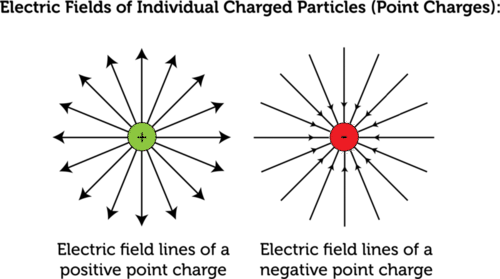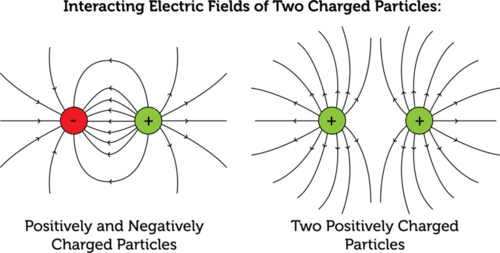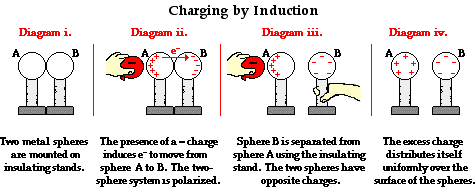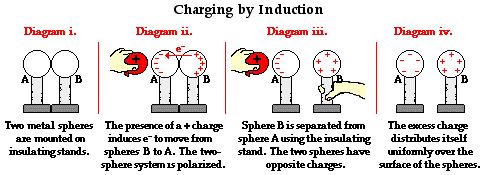This is when electrons are transferred from one object to another when they come into direct contact with each other. Rubbing one’s feet on a carpet can cause charge to accumulate in the hands if the feet are insulated from the ground
Simulation featuring John Travoltage: John Travoltage
Charging by induction
- If electrons are exposed to the external electric field of a charged object then the electric force can attract or repel these electrons
- Metals are known for having a ‘sea’ of electrons which can freely move from one atom to the next
- When an external electric field is brought close to the surface of the metal, if the field belongs to a negatively charged object then the electrons migrate away from the side of the metal exposed to the electric field (because like charges repel)
- The far end thus becomes negatively charged and the close end will be net positive in charge
- The electrons on the far end can be conducted away and thus the object will have a net positive chargeCredits: the Physics Classroom
Charging by polarization
- For the atoms which do not have the sea of electrons, the electrons react to the electric field and the individual atoms become polarized (the charge is shifted to one side of the atom)
- Similar to induction, the net charge of the object does not change but the charge does buildup on one side of the object
- The loss of static electricity (the transfer of charge) from one object to another is called static discharge
What are Electric Fields?
An electric field is the region around a charged particle or body within which any other charged particle or body will experience a force (attractive or repulsive depending on the signs). Field lines are used to visualize the direction of the field. We draw field lines with arrows coming out of positive charges and going into negative charges.



Applications and dangers of static electricity
Read the following articles:


